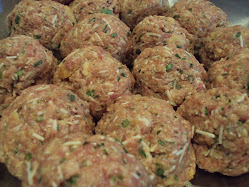January 1st, 2010
Happy New Year to those that read this.
Of course being the first day of the New Year my mind is on the next several months and what needs to be done around the old compound. The veggie beds are 50% occupied with my winter crops, carrots, chard, parsnips, turnips, radish, cardoons, potatoes, horseradish, leeks, onions, fava beans, garlic..you name a winter crop and its out there. The greenhouse is almost online with the lettuce I started several weeks ago. Also in the greenhouse the celery and parsley are a few inches in height and should be harvestable in another 30 days or so. About 40% of the greenhouse is fallow and I will use that space in the weeks ahead for my veggie starts; tomatoes, egg plant, peppers, cucumbers, summer squash, etc. etc .
First spring crop to go in will be peas, I should just get out there today and sow them. I am sure many of you in areas outside of California just cringed insomuch as you are either still frozen or have frosts ahead. Normally I can plant tomatoes in the first week of March. There is some level of risk in doing so as the ground must be at least the mid 60’s. If the roots of tomatoes get to cold you will have rot issues on your fruit later in the season. This can only be addressed with the addition of lime to your beds which causes some additional issues further down the road. So that being said I usually see how the weather looks in advance of dropping my tomatoes in the ground in the first weeks of March. But before any of that can commence I need to condition the raised veggie beds. Half have sat fallow over the winter, and I have amended the soil with green manure (grass clippings, leaves, etc) and hot chicken manure. Also I will keep my eyes out for some local horse manure, fold that in at the end. The other big consideration is to rotate crops into different beds each year to avoid diseases the prior crop could pass on to your spring and summer garden. Finally I need to inventory my seed vault and fill in anything low and add anything new I am interested in planting in the coming season.
On the food front there is only one dish you should have on the stove today. Hoppin’ John. This dish’s origins are humble; The dish is believed to have originated in Haiti among those unfortunate souls who had been stolen from Africa to work the plantations of the Americas. They used what they had on hand, often the lesser cuts of meat, and those items that could be scrounged up in the surroundings. What the dish looked like 400 years ago and what it looks like today probably have changed little. The two primary ingredients are beans and salt pork. In addition to this you can add the trinity (onion, celery, and peppers). Okra, leeks, etc could be added as well. The reason you make Hoppin’ John is that in the South it is believed to bring you good luck in the new year. That is enough for me to have it on my table; recipe;
1 tbls olive oil
1 leek slivered
1 heart of a celery plant (use the inner stalks and be sure to include the leafy bits at the top)
2 carrots diced
2 ham hocks or tasso ham
1 bay leaf
1lbs black eyed peas, soaked overnight and drained ( you can also use northern white, or other beans on hand)
Enough chicken stock to cover hocks and beans
Couple cloves of garlic
Aromatics, thyme, rosemary, oregano etc.
In a large stock pot add the olive oil bring up heat to medium, add garlic, leeks, carrot, celery. Sauté for about 5 minutes until the leeks become translucent. Toss in your aromatics, ham hocks or tasso ham, add bay leaf. Pour chicken stock in and put burner on low. You will slowly cook this until the meat falls off the hocks, or until the tasso falls apart and the beans are soft. Remove all the hocks pick the enable bit out of them and discard the bones and gristle. Return the meat to beans and you are good to go. You can sever it with a little crystal hot pepper sauce or on its own…enjoy.
The suburban/urban/country farmer. Grow it, Raise it, Harvest it, Eat it, Ferment it, Distill it, Drink it.
Subscribe to:
Post Comments (Atom)


























No comments:
Post a Comment